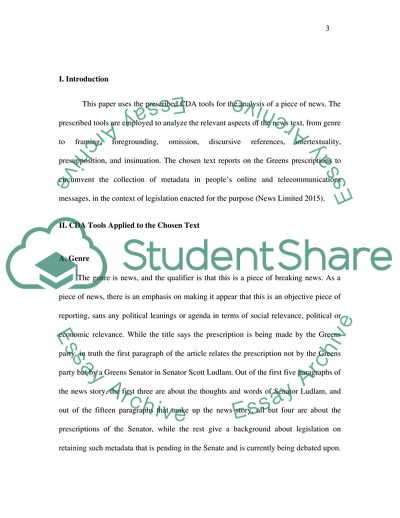Cite this document
(CDA Tools Applied to the Text Essay Example | Topics and Well Written Essays - 2000 words, n.d.)
CDA Tools Applied to the Text Essay Example | Topics and Well Written Essays - 2000 words. https://studentshare.org/journalism-communication/1871347-critical-discourse-analysis-tool-kit-critical-analysis
CDA Tools Applied to the Text Essay Example | Topics and Well Written Essays - 2000 words. https://studentshare.org/journalism-communication/1871347-critical-discourse-analysis-tool-kit-critical-analysis
(CDA Tools Applied to the Text Essay Example | Topics and Well Written Essays - 2000 Words)
CDA Tools Applied to the Text Essay Example | Topics and Well Written Essays - 2000 Words. https://studentshare.org/journalism-communication/1871347-critical-discourse-analysis-tool-kit-critical-analysis.
CDA Tools Applied to the Text Essay Example | Topics and Well Written Essays - 2000 Words. https://studentshare.org/journalism-communication/1871347-critical-discourse-analysis-tool-kit-critical-analysis.
“CDA Tools Applied to the Text Essay Example | Topics and Well Written Essays - 2000 Words”. https://studentshare.org/journalism-communication/1871347-critical-discourse-analysis-tool-kit-critical-analysis.


